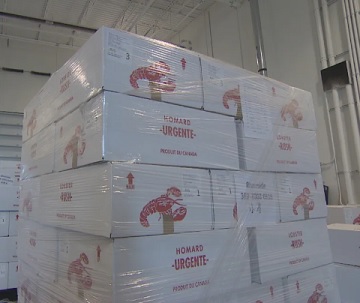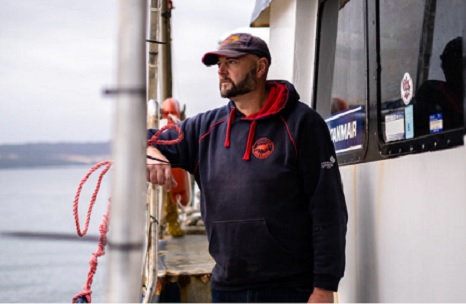Search Results for: China, lobster
Importer of Belizean Lobster Faces $5 Million Fine and Probation for Labeling Fraud
 An importer of Belize’s lobster is facing harsh consequences after a federal judge in Key West, Florida, ordered that Elite Sky International, Inc. pay five million dollars in fines, plus be placed on a 5-year probation. The judgment follows findings that the company was exporting inaccurately labeled spiny lobster and shark fins from Florida to China. According to court documents, the illegal activities took place over a span of approximately one year, from November 2018 to October 2019. more, >>click to read<< 12:06
An importer of Belize’s lobster is facing harsh consequences after a federal judge in Key West, Florida, ordered that Elite Sky International, Inc. pay five million dollars in fines, plus be placed on a 5-year probation. The judgment follows findings that the company was exporting inaccurately labeled spiny lobster and shark fins from Florida to China. According to court documents, the illegal activities took place over a span of approximately one year, from November 2018 to October 2019. more, >>click to read<< 12:06
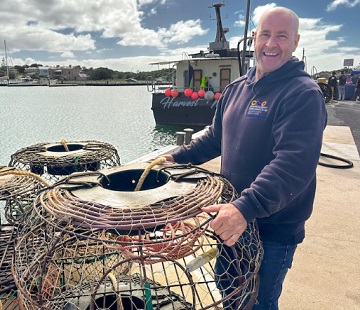
Lobster season underway, but South Australian fishers still missing out on Chinese trade
Lobster fishers in South Australia’s southern zone are heading out today to set their pots for the start of the season. After a two-year trial, the season’s September 1 start date has become permanent in the hope it will help get lobsters onto the plates of those celebrating the Chinese Mid-Autumn Festival. Robe lobster fisher Paul Regnier supports the change. “It has been a real bonus for us,” he said. But China is still not allowing Mr Regnier’s catch into the country — officially, at least. China’s 2020 ban on Australian lobsters sent prices crashing and exporters were forced to find new markets for the crustaceans. >>click to read<< 10:34
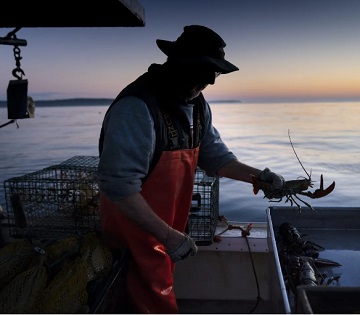
Maine lobstermen snipped by inflation as 2022 results fall nearly 50%
Fishers of Maine lobster, one of the most lucrative seafood species in the U.S., had a smaller haul during a year in which the industry battled surging fuel and bait prices, rebukes from key retailers and the looming possibility of new fishing restrictions. Maine lobster has exploded in value in recent years in part due to growing international demand from countries such as China. The industry brought about 98 million pounds of lobster to the docks worth about $389 million in 2022, Maine regulators said Friday. That was more than 11% less than the previous year, in which they harvested more than 110 million pounds of lobster worth more than $740 million. The value of lobsters also fell to a little less than $4 per pound at the docks, the lowest since 2017, a year after setting a record of more than $6.70 in 2021. >click to read< 10:33
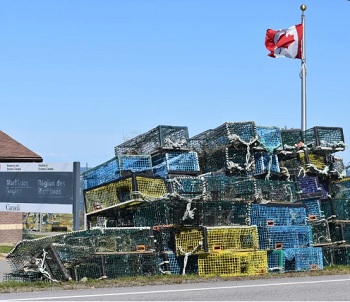
Nova Scotia cracks down on lobster operators to protect industry’s ‘integrity’- Suspensions issued at 2 lobster pounds
In August 2018, Fisher Direct in Shag Harbour, N.S., was caught with lobster harvested under an Indigenous licence, which bars selling the catch. The pound, which has annual sales upwards of $20 million, had received a shipment of 1,400 kilograms of lobsters the day before federal fisheries officers descended on the facility. Inside the 31 crates, officers found 48 lobsters tagged for Indigenous food, social or ceremonial purposes that the department had previously microchipped. Meanwhile, a larger operation in southwestern Nova Scotia is also facing at least one licence suspension. In 2021, Atlantic ChiCan on Cape Sable Island was convicted for illegally shipping American lobsters to China, claiming they came from Canada. >click to read< 07:16
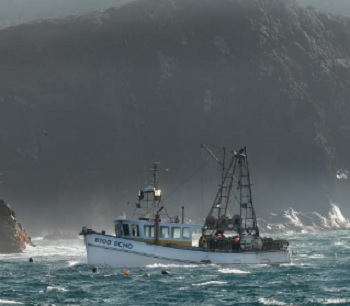
Rock lobster back on the menu
New Zealand’s rock lobster industry is catching up on a slow year thanks to the end of a Chinese lockdown and the conclusion of an unlucky spiritual festival. Shanghai is one of New Zealand’s biggest lobster importers, but the city was locked down from March to June. Fiordland Lobsters sales and marketing general manager Andrew Harvey said it had taken time for the industry to get back up to speed. That was combined with Ghost Month, a time dedicated to the spirits of the dead which spanned from late July to August. Australia banned exports of lobster to China in 2020, which had also increased the New Zealand share of the market and helped it through some of the slow patches. >click to read< 08:47
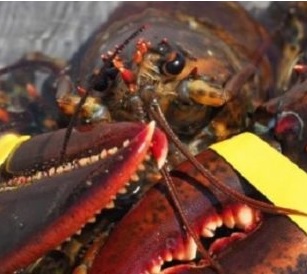
Canadian Lobster industry sense more regulations coming for Chinese exports
In January, the Chinese Government introduced new import regulations known as Decrees 248 and 249, which require international distributors to register with the General Administration of Customs of China (GACC), and for products to include Chinese-language labeling. Since their implementation, there have been many issues, with lobster distributors claiming they have erroneously been told they aren’t registered with GACC, causing delays in shipping and in sometimes voiding the Chinese importer’s obligation to pay. Currently, the regulations only apply to frozen or cooked products. >click to read< Tracing measures issued in January required Chinese-language labelling on processed seafood >click to read<14:56
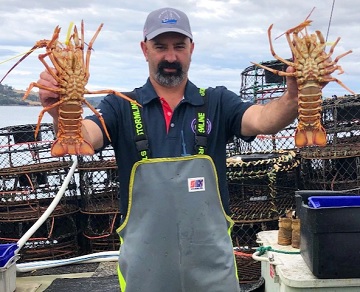
Fishers struggle as lobster ‘nearly as cheap as chocolate’
A dramatic collapse in export markets has flooded Australia with large quantities of cheap lobsters selling for as little as $35 a kilogram. At that price, fishers struggle to break even and processors are not getting enough orders to chew through the oversupply of fish, with one describing the price as “nearly as cheap as chocolate”. “I’m hearing fishermen struggling to maintain deckhands because they’re not earning enough money, fishermen talking about having to get a second job,” Mr Blake said. “It’s been very challenging.” Fishers used to sell lobsters into China for around $100 per kilogram but the industry has been locked out of that market since the outbreak of covid. >click to read< 08:04
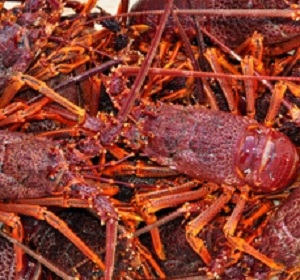
Licence fee reduction among government’s lobster support
The state government is set to provide relief to the state’s commercial rock lobster industry including a 50 per cent reduction in licence fees and an independent review into cost recovery. The industry has continued to feel the effects of ongoing trade sanctions imposed by China, which had been its biggest market, on top of a decline in domestic markets due to COVID-19. This includes a 50 per cent reduction in commercial rock lobster licence fees for the next year, which the government says will save the industry nearly $2.6 million in 2022-23 according to current Rock Lobster Cost Recovery Statements for 2021-22. >click to read< 09:45

U.S. lobster set to feed another Chinese New Year as demand booms
The week-long holiday, commonly known as the Spring Festival or the Lunar New Year, is typically one of the busiest times for the U.S. lobster business. Appetite for the crustaceans remains strong in China this year, despite pandemic-related challenges to transportation and logistics, according to U.S. lobster industry members. “I have orders every day. Whether I can get them all on the airplanes every day becomes a question,” Bill Bruns, operations manager at The Lobster Co. >click to read< 08:16

A Preposterous Claim: Chinese media says Maine lobster shipment was ‘Pandora’s box’ behind pandemic
A recent article in the Sina news portal, one of the most read on China’s state-controlled internet, reported that in mid-November 2019, a batch of seafood from Maine was shipped to the “Wuhan South China Seafood Market,” also known as the Huanan Seafood Market, where the virus was first reported in late 2019. According to the translated Sina article, within a few weeks, employees in the market began experiencing “symptoms of pneumonia of unknown origin one after another.” Sina named “the Seashell Company” in York County as the original source of the lobster. >click to read< There was talk about that in 2019 during the trade war,,, US-China Trade Deal: US lobster dealers anxious to resume business with China –Hugh Reynolds, a lobster dealer from Stonington, Maine, was excited to learn that the China-US phase-one economic and trade deal came into effect on Feb 14., >click to read< >Search results for China, Lobster< 13:41

Australian lobsters back on the Chinese menu as ‘grey trade’ fires up again
Australian lobster fishermen shut out of mainland China appear to be selling millions of dollars’ worth of crayfish to the once-booming market via unofficial “grey channels”, trade experts say. Commercial fishers across the country were left reeling in November when China appeared to impose an unofficial ban on Australian lobster exports that had been worth hundreds of millions of dollars. The suspension effectively stopped the trade with China, which had been buying more than 90 per cent of lobsters exported from Australia. >click to read< 11:48

A “heavy mental impact” – Tasmania’s rock lobster industry suffers in trade war
Beijing cancelled the China Australia strategic economic dialogue this week, effectively ending trade relations between the two countries. For Tasmania’s rock lobster fishers this trade war is real and destroying their livelihoods and businesses in less than 12 months. Lobster fisher Kane Ebel said there was a “heavy mental impact” to the trade war. “When you get out of bed in the morning and you’ve got big debts on your boat and your house and effectively can’t go to work, it’s got to take a toll,” he told Sky News. >click to watch< 18:48

They’re Ready! P.E.I. 2021 spring lobster season – ‘Things look a lot more positive this year than they were a year ago’
Last spring, as uncertainty due to Coronavirus, reined worldwide and the lobster industry struggled with a two-week delay to the season, securing workers and keeping them safe, and getting a fair price for harvesters. “Plants weren’t ready to start production, they didn’t have PPE for the workers in the plants, they didn’t have enough workers for the plants,,, “The plants are ready, they have the workers in place for the most part, the PPE and the changes to the plants have already been done,”. McGeoghan said demand is high from China, Europe is opening up again and the U.S. demand is “steady.” >click to read< 10:14
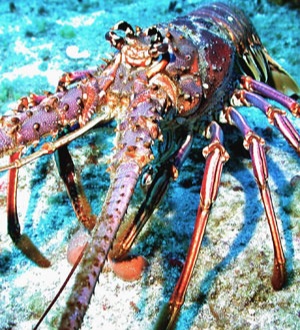
Florida Spiny lobster season ends
Bill Kelly says the spiny lobster fishery is like real estate. “Location is everything,” said Kelly, executive director of the Florida Keys Fishermen’s Association. “We’re seeing a significant season, a good season for spiny lobster and stone crab harvest in the Upper Keys and [mainland] South Florida. We’re also seeing that in the extreme Lower Keys and down into the Marquesas and the Tortugas.” The lockdowns in China early during the pandemic didn’t help the industry either. Kelly said China buys about 80% of the live spiny lobsters, and they pay top dollar. >click to read< 11:39

Spiny lobster comes back to San Diego
The rumored price prior to the season opening was $8 per pound, down from the 2019 average of about $20 and 2015’s high near $30. California Department of Fish and Wildlife data showed that spiny lobster was the most profitable local catch at $3.8 million in 2017. In 2018, it brought in $3 million, beating out bigeye tuna. When the pandemic started in China in late 2019, it coincided with the height of legal spiny lobster season in California. Sales in 2019 dropped to $1.8 million. Among San Diego’s top-grossing seafoods, spiny lobster saw the biggest decline. Said Halmay, “They [local fishermen] got together and decided, ‘We can’t make a living off that. Let’s do something about it.’” >click to read< 16:54
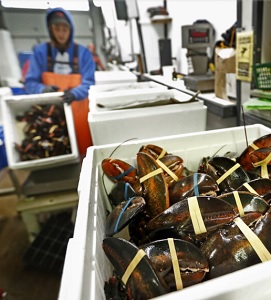
Coronavirus: Why the Lunar New Year matters for Maine lobster shippers
The Lunar New Year is typically one of the busiest parts of the calendar for America’s lobster shippers, who send millions of dollars worth of the crustaceans to China every year. This year the holiday is Friday, and industry members said the Year of the Ox won’t necessarily be the Year of the Lobster. That’s because shipping has been complicated this winter by the threat of the virus. Mike Marceau, vice president of The Lobster Company in Arundel, Maine, said he isn’t expecting much in the way of exports. >click to read< 08:44
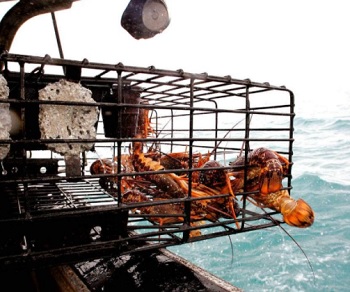
New Zealand crayfish in hot demand in China, selling for $100, as China-Australia relations sour
Though this time of year is usually quiet a shift in global politics has made for a busier November and December than expected. A diplomatic stoush saw China refuse various Australian exports, including live crayfish, also known as kōura or rock lobster. Suddenly Chinese buyers are paying a lot more to get hold of New Zealand crays. The extra cash has been a welcome boost, after the industry’s $38m loss during lockdown. >click to read< 16:43
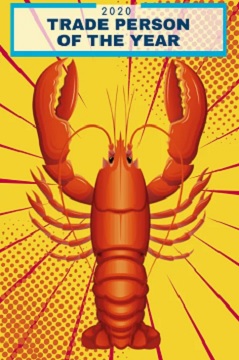
Lobsters Are A Prawn In The Trade Wars
American lobster and lobster fishers got caught in a trade war being fought on multiple fronts. The United States is battling China on one major front and the European Union (EU) on another, but as is typical in trade wars, it’s lobster production in another country that’s winning the war. In this case, Canada. If that weren’t enough, tariffs are the root cause of the trade war, but not in the way you might think. China’s tariffs on U.S. lobsters are in retaliation for President Trump’s China tariffs over intellectual property. The EU didn’t raise its tariffs on U.S. lobster, but rather lowered them on Canadian ones as part of their free trade agreement. In other words, U.S. lobsters were never meant to be the target of either Chinese or EU,,, How the lobster trade war started isn’t nearly as interesting as the efforts to stop it. >click to read< 10:28
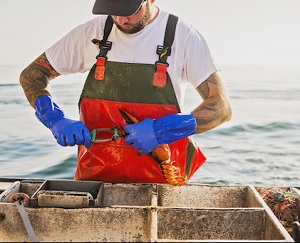
$36 million in trade relief awarded to Maine lobstermen
Maine lobstermen have been awarded a total of $36,284,110.12 to date to help offset the financial harm they have experienced due to China’s retaliatory tariffs, according to a news release. The funding has been provided through the U.S. Department of Agriculture’s (USDA) Seafood Trade Relief Program. Following a letter the Maine Delegation sent to President Trump in June 2019, the Administration issued a Presidential Memorandum that called on USTR and USDA to provide the lobster industry with the same form of financial assistance,,, >click to read< 08:50
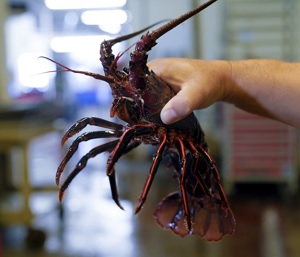
California Lobster season debuts amid changing seafood industry
It’s California spiny lobster season, from October through mid-March. Local fishermen and seafood retailers are celebrating its arrival, announcing the happy news that prices are the lowest in many years and the supply plentiful. What’s changed? In recent years, more than 95 percent of these well-loved California crustaceans were shipped to China, leaving only high-priced, limited quantities for local consumption. Rumors circulated that some fishermen were contemplating suspending operations, discouraged by their lost markets. Then, just as quickly, attitudes changed, as reality sank in. “People have to eat. If we don’t fish, what are people going to eat?” >click to read< 09:40

Despite an uncertain start to the fishery’s season, Maine lobster rolls on as the industry pivoted to new markets
Stonington lobster fisherman John Williams usually hauls his boat out in February for annual maintenance and paint in preparation for the start of the spring fishing season. “Then COVID started,” The health emergency was worsening and the economy shutting down. That included one of the lobster industry’s biggest markets — restaurants. The large cruise ship and casino markets also slammed shut. International freight and shipping to China, emerging as a large consumer of lobster, had nearly stopped. “I got thinking about it and said, ‘This doesn’t look very good. We won’t have any market,’” Williams says. >click to read< 10:31

Commercial fishermen sinking as yields fall without China’s buyers
“Commercial fishing operations are an important component of Port Miami River’s marine industrial businesses, which generate countywide jobs,” said Horacio Stuart Aguirre, chairman of Miami River Commission. Offshore fishermen work in a predominantly healthy environment, so Covid-19 hasn’t been debilitating for the workforce, said Luis Garcia of Garcia’s Seafood, a commercial lobster and stone crab business, “but it’s a pandemic in the sense that it has trickled down economically. The price of our product is plummeting because restaurants and bars that buy our product were not in business and we were sitting on the product. “In the past several years we’ve had another revenue stream selling overseas – lobster to China, for example – but that market also shut down.” >click to read< 11:18

Eric Trump tells Maine lobstermen: ‘We will never, ever let you down’
When Seth Dube was growing up in Camp Ellis, Saco’s gritty seaside community boasted a robust ground fishing fleet, but the draggers are mostly gone now, replaced by lobster boats like his. The sixth-generation fisherman blames government overregulation for that industry’s demise, and used to worry lobstering could be next. That was before President Trump became a friend of the Maine fisherman, Dube said – reopening marine monuments to fishing, delaying environmental rules that would have forced some lobstermen to install greener diesel engines, inking a trade deal allowing tariff-free lobster trade with Europe and giving lobstermen trade relief for lost China sales. >click to read< 11:19

CARES Act: Lobstermen may get up to $50 million in pandemic relief funds
Whatever the relationship between China and the United States — particularly the lobster industry — may be, Maine lobstermen are certainly living in interesting times. Last week, a scant two months before the upcoming presidential election, the U.S. Department of Agriculture announced that it  would soon release some $530 million appropriated by Congress last March under the CARES Act to assist the U.S. seafood industry and fishermen damaged by retaliatory tariffs. Those tariffs have been imposed primarily by China and the European Union on imports of U.S. live and processed seafood. >click to read< 16:58
would soon release some $530 million appropriated by Congress last March under the CARES Act to assist the U.S. seafood industry and fishermen damaged by retaliatory tariffs. Those tariffs have been imposed primarily by China and the European Union on imports of U.S. live and processed seafood. >click to read< 16:58

Trade minister says she’ll keep eye on U.S. probe of Canadian lobster industry
The Canadian industry gained most of the Chinese market that the Americans lost after China slapped a 35 per cent tariff on U.S. lobster exports. Canada also saw its lobster exports grow in Europe after it signed the Comprehensive Economic and Trade Agreement, or CETA, with the European Union, giving it a tariff advantage over its U.S. competitors. The Trump administration, however, has recently signed an agreement with China that removes the 35 per cent tariff. And a separate deal with Europe also removed tariffs on American lobsters that had provided the Canadian industry an advantage. Executive Director Geoff Irvine (Lobster Council of Canada) said Monday the lobster industries of Canada and the United States are now back on an even playing field. >click to read< 07:17

“We’re not sure what it means,” – Trump turns an eye on Canadian lobster, launches Trade Investigation
On Aug. 24, the United States International Trade Commission announced it will investigate the possible negative effects of the Canada-Europe Trade Agreement (CETA) on American lobster exports. The investigation was requested by U.S. Trade Representative Robert Lighthizer. The investigation will also examine tariff treatment of Canadian lobster in the United Kingdom, China and other countries. “We’re not sure what it means,” said Geoff Irvine, executive director of the Lobster Council of Canada. “We’re studying it. The government of Canada is studying it. Now we’re talking to our colleagues in the U.S. and we’re trying to figure out how best to manage it from the Canadian side.” >click to read< 08:36







